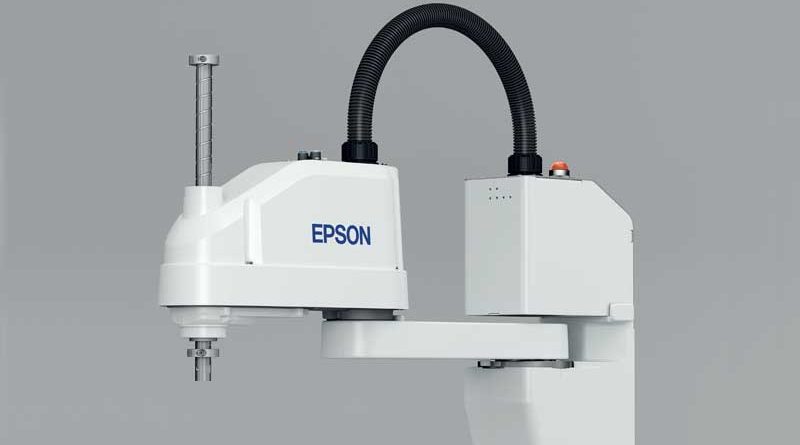Lightweight Robots for All Tastes
From the SCARA robots, flagship of the industrial robot range, to the six-axis models. But also the new dual-arm and the options that make the robots suitable for sharing the work area with operators. Andrea Casari, General Manager of Sinta, the Italian distributor of Epson robots, led us to discover the new products put on display by the Japanese company at the last edition of Automatica.
by Fabrizio Garnero e Fabrizio Dalle Nogare
The expansion of Epson’s range of industrial robots follows a well-defined strategy, in continuity with the company’s specialization in a sector – that of lightweight handling and assembly – where the Japanese company itself has been a leading global reference for many years. Now, the development of automation solutions requiring high precision and speed is joined by projects aimed at making the coexistence of robots and operators in the same area easier. “Epson’s traditional specialization in SCARA robots – says Andrea Casari – has led to the development of three series featuring similar mechanics and software, but at the same time different in terms of cost for the entry level models (T series), the intermediate models of the LS series and the Premium range. All this to let the customer choose the best robot according to their specific needs. We might say that the key factor when it comes to choosing a robot model instead of another is the application, or rather the desired cycle time”.
The new compact and versatile SCARA robot
The entry-level range of compact and versatile SCARA robots is now enhanced with a new option, the T6 model, with a payload of up to 6 kg, which is a more powerful version of the popular T3. The battery-less motor with absolute encoder reduces maintenance and downtime on the production line, while the available
I/Os for grippers or other tools, located at the end of the robot arm, makes wiring simpler and reduces set-up time. The robot design also provides for reduced wiring at the top, giving the robot itself greater stability.
“The controller is integrated into the manipulator, then simplifying installation, set up and reuse of the robot, as well as ensuring greater compactness and therefore more space available in the machine”, adds Mr Casari.
Six-axis robot with integrated controller
From four to six axes, the philosophy does not change: more series with different features to ensure greater freedom of choice. At Automatica, in addition to the VT6 entry-level model with integrated controller, the N6 robot was presented. It is the latest addition to the N series, with a reach of 1,000 mm and a payload of 6 kg. The new six-axis robot can be installed in confined areas where previous generation models could not access, while the hollow arm provides more space for connections and hoses. Just like the arm, the new optional SH250LH force sensor also has a cable design for the internal passage of electrical wires and tubes.“Thanks to their design, Epson’s N Series six-axis robots can reach many more spots and a level of accuracy that is generally associated with much larger robots, implying higher costs and higher power consumption”, says Sinta’s General Manager.
A “soft” skin for working together with the operators
At Automatica, Epson also showed the company’s idea of a closer cooperation between human and robot. In synergy with the Austrian company Airskin, a T3 SCARA robot has been covered with a soft protection system allowing it to be certified and employed, within a given speed range, in a work area shared with the operator. “A solution that can certainly be useful when a very high performance in terms of speed is not required, for example”, adds Mr Casari. “This project aims at favouring the coexistence between human and robot and shows that Epson pays attention to such an issue. Together with the introduction of an easy programming mode, based on function blocks and supported by the use of some specially developed Apps, the idea is to provide customers with low-cost robots that are also quite easy to program and manage and ready to be used in a cooperative way”.

